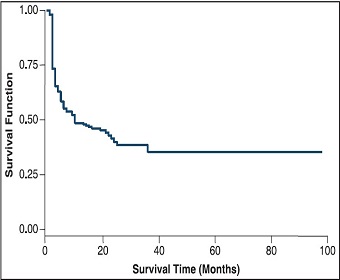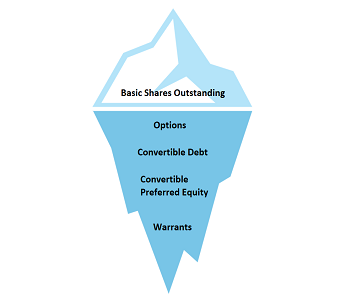Raising capital often carries positive implications for a company’s shareholders, enabling growth & acquisitions, for example, and may be accretive in the long run. But financings can be just as damaging depending on the provisions and components of the deal.
One of the most important concepts for investors, particularly those buying small- or mid- cap equities, is to understand the capital raising process and a company’s capital structure. A solid understanding of the process by which companies sell registered and unregistered securities, and how the SEC regulates this process, can greatly enhance the profitability of any investing or trading strategy.
For a better understanding of how companies go public and how they’re regulated on public exchanges, see An Investor’s Guide to the “Going Public” Process.
Public companies have several methods available to raise capital. One of the most common methods is to sell shares of the company’s stock to investors in either a public or private sale. Each share of stock in a company represents an ownership interest in the company. The amount of stock available for sale by a company depends on the amount of shares that are authorized for issuance by its articles of incorporation.
When investing in a company, investors should familiarize themselves with how many shares are then currently issued and outstanding and how many shares are authorized but as yet unissued. This informs the investor as to how much ownership in the company each share of stock represents and how much additional stock could potentially be issued in the future, potentially diluting their ownership in the company. This is particularly important with smaller, less established companies that may have greater cash needs to grow or maintain their business and, as a result, may be tempted to sell more stock to fund these needs.
Public vs. Private Sales
Federal securities regulations require that all shares of stock sold in the United States be registered in advance of their sale with the SEC, unless there is an exemption to such requirement available. All public sales of stock by a company are registered with the SEC on a registration statement. All private sales must fit within one of the exemptions to the registration requirements set forth in the Securities Act of 1933. The most common exemption from registration is provided by Section 4(a)(2) of the 33 Act for transactions by a company that do not involve a public offering.
The SEC has also created a series of rules set forth in Regulation D, Rules 504, 505 and 506, which set forth applicable exemptions from registration for companies that wish to sell stock privately. Rule 506 is probably the most commonly used exemption for companies that wish to sell stock privately without registration. Many companies prefer to sell stock in private transactions because the cost of these private transactions is less than a public offering, which requires that a registration statement be filed in advance with the SEC. And, private sales tend to have a less immediate depressive effect on the company’s public share price. Investors like private transactions because the stock is generally offered at a discount to the current price of the company’s stock on the public market since it is not immediately available for resale publicly.
Restricted Stock / PIPES / Rule 144
Investors that purchase stock from a company in a private sale should be aware that until the stock is either registered for resale with the SEC, or an exemption becomes available that allows resale without registration, the investor will not be able to resell the shares publicly. These privately acquired shares are referred to as “restricted stock.” In some cases, investors will bargain for “registration rights” as a condition in their purchase of restricted stock. This is common when the company has engaged an investment bank to act as agent in selling its restricted stock in a private transaction since the investment bank will want to present an attractive deal to its investor customers.
When an investor is granted registration rights, the company has committed to register the restricted stock that was sold privately for public resale on a registration statement filed with the SEC. Once the registration statement is declared effective the investors who bought the restricted stock in a private transaction can resell it on the public market. Once the restricted stock is sold pursuant to a registration statement it is no longer restricted and becomes free trading stock. A transaction that involves the sale of restricted stock with a commitment from the company to register the stock for resale publicly is often referred to as a “PIPE,” which stands for Private Investment in Public Equity.
Restricted stock that is not registered for resale can only be resold publicly under certain limited conditions. The most common method for public resale of restricted securities of public companies is for investors to rely on Rule 144. Rule 144 is a rule adopted by the SEC that allows holders of restricted stock to resell their shares publicly if certain conditions are met. These conditions include, among other things: the need to have held the stock for a specific period of time, usually six months; the need for certain information to be available regarding the company, usually satisfied if the company is current in its public reporting; and that the shareholder not be involved in a scheme of distribution on behalf of the company that would require registration of the stock before its sale.
Investors should, however, be careful and are encouraged to consult with competent legal counsel before considering the purchase of restricted stock, as Rule 144 is complicated and may not be available in certain circumstances. For example, a shareholder of a company that engaged in a reverse merger in order to become public may not be able to rely on Rule 144 if the company is not current in its reporting obligations under the Securities Exchange Act of 1934 (e.g. 10-K and 10-Qs) at the time the shareholder wishes to sell.
When investing in a company, whether in a private transaction or pursuant to a public offering, investors should educate themselves with regard to not only the transaction that they are considering at the time but also with regard to historical transactions the company may have conducted. Past private transactions can have an effect on a company’s stock price in the public market. For example if a company’s stock is trading publicly at $5 per share but it completed a large private transaction at $4 per share nearly six months ago, this may mean that a large amount of stock could come into the public market through sales pursuant to Rule 144 in the near future. These formerly restricted shares are likely to have a depressive effect on the public market price of the company’s stock. The same concern would be present if the company had recently filed a registration statement for the resale of stock sold at a lower price in a previous PIPE.
Follow on Offerings / Form S-1 / Other Types of Registration Statements
Once they are public, many companies choose to continue to register stock for sale publicly. As previously discussed, all public sales by companies occur through the filing of a registration statement with the SEC, which registers the stock for sale to the public. Companies that are not listed on NYSE or Nasdaq, and which do not meet certain thresholds as to market capitalization (the total value of all stock held by non-insiders), are required to use Form S-1, or if they are foreign company, Form F-1.
Form S-1 is the most basic form for the registration of stock to be sold in a public transaction. A Form S-1 contains information regarding the stock that is being sold (e.g. price, amount of stock, class of stock, etc…), a description of the company, biographical information regarding officers and directors of the company, use of proceeds from the sale of the stock being registered, financial statements and summary financial information, disclosure regarding risks associated with the company and its stock, a plan of distribution detailing how the company plans to sell the stock, and other information important for investors to understand.
A company will generally prepare the Form S-1 with the assistance of its securities attorneys and, if it has engaged one as either an underwriter or selling agent, its investment bank. Once complete, the Form S-1 is filed with the SEC on the EDGAR database where it will be reviewed by the staff of the SEC’s Division of Corporate Finance. A registration statement on Form S-1 will receive one of three levels of review: no review, limited review or a full review. Smaller companies whose stock trades on one of the OTC Markets can, in most cases, expect a full review. Assuming a full review of the Form S-1, the SEC staff will issue comments regarding the format and content of the form, which are submitted to the company and its counsel for response. It is not unusual for a full review to include up to three or even four rounds of comments, each of which results in an amendment being filed to the Form S-1 on EDGAR.
Once the staff has no further comments, it will clear the filing for effectiveness (look for an EFFECT filing). Once the Form S-1 is declared effective, the stock that was registered for sale can be sold publicly in accordance with the “Plan of Distribution” that was included in the registration statement. Companies whose registration statements on Form S-1 receive a full review can expect that the process will take between 90 and 120 days from filing to effectiveness; however, shorter or longer periods of review are not unusual.
Depending on the Plan of Distribution included in the registration statement, the company can either sell the stock in one specific offering or on a continuous basis. An example of using a registration statement to sell stock in one specific offering would be a company that is conducting a follow-on offering some time after completing its IPO in order to raise additional capital at one specific time. These follow on offerings usually involve an investment bank as either an underwriter or selling agent and are generally preceded by the same types of activities as an IPO (e.g. a road show, solicitations of indications of interest from potential investors, etc…). The investment bank will earn a fee in the form of either an underwriter’s discount or a sales commission, depending on whether the offering is underwritten or conducted on a best efforts basis.
Offerings that occur on a continuous basis are known as “shelf offerings” because the company has registered a specific amount of shares and is holding them on the shelf for a time when it may need to raise capital to fund a specific project or initiative. Although shelf offerings can be structured for non-NYSE and -Nasdaq companies through the use of Form S-1, they are very cumbersome because they must be constantly updated with amendments every time the company has a substantial development or updates its financial information in a periodic report such as a Form 10-Q. This is why most companies that use shelf offerings are those that have stock listed on the NYSE the Nasdaq, because they are eligible to use a shorter form of a registration statement known as Form S-3.
Form S-3 is more streamlined: it does not need to be updated on a regular basis, since it incorporates by reference periodic reports filed pursuant to the 34 Act and, in the case of certain shelf offerings, is effective upon filing so that the company does not need to go through the lengthy SEC review process. However, in order for a company to qualify to offer stock using Form S-3 it must have stock listed on a national securities exchange (e.g. NYSE or Nasdaq); it must be current in its periodic reporting; not have engaged in a reverse merger in the past 12 months; and meet certain requirements as to market capitalization.
Regardless of whether a company seeks to sell stock publicly in a one-time follow-on offering or continuously pursuant to a shelf registration, investors should carefully review a public company’s filings to determine if it has filed a registration statement recently; whether that registration is currently effective; and if so, what is the timing and amount of the stock that the company plans to offer for sale pursuant to such registration statement. Simple supply and demand dictates that if more stock becomes available it is likely that the price of a company’s stock will decline. This is easier to figure out in the case of one-time follow-on events, as the timing and price will likely be announced in advance of the offering’s commencement. Unfortunately, in the case of shelf offerings, investors may not be aware that a company has “pulled stock off the shelf” until a prospectus supplement is filed with the SEC on the day the shelf offering is completed. These types of offerings, know as “CMOs” or Confidentially Marketed Offerings are generally only made available to institutional investors, are sometimes done at a discount to the market and generally tend to have an immediate negative impact on a company’s stock price. The stock price of a company that puts up a large shelf tends to be depressed as a result of the overhang created by the shelf and the possibility that those shares will eventually be sold into the public market.
One thing that investors should not have to worry about is whether investors that participate in a CMO or any public offering have sold short the stock of the company prior to the offering. Rule 105 of Regulation M under the 34 Act prohibits any participant in an offering (including investment banks) from covering a short sale made in the five days prior to the pricing of an offering using stock sold in such offering.
Investors should, however, scrutinize registration statements to determine if some or all of the stock being registered for the “selling shareholders” in the registration statement is on behalf of prior investors. The registration statement will disclose the terms upon which such selling shareholders obtained the stock they are seeking to resell, including their original purchase price. And, since the selling shareholders already own the stock that is being registered, they can use these shares to cover a short position.
Debt Financings / Convertible Debt / Good vs. Bad Convertible Debt
Just like individuals, companies can borrow money to finance themselves. Debt financing can take the form of traditional bank debt, where the company borrows money from a bank or other financial institution, pays interest on the principal amount of the debt and then must repay the principal at some time in the future. Debt financing can also take the form of convertible debt, where the debt incurred can be converted into equity securities of the company, such as common stock.
The terms of convertible debt can vary greatly. Sometimes a company will issue convertible debt in an effort to avoid dilution to its common stock. In such a transaction the company may negotiate a grace period during which it can repay the debt and avoid conversion into its common stock. Sometimes investors will insist on conversion features in debt securities so that if the stock appreciates they can choose between accepting repayment of the loan or conversion into stock of the company. Conversion features provide the most opportunity for abuse. As long as the debt is convertible at a fixed rate, investors can calculate the potential dilution to the company’s common stock. For example, if Company A borrows $1,000,000 from a group of lenders by issuing the lenders a note convertible into common stock at $10 per share, we can calculate that the maximum amount of stock that will be issued on conversion is 100,000 shares.
If, however, the conversion rate is variable there is more possibility of abuse. For example, Company B borrows $1,000,000 from a group of lenders by issuing the lenders a convertible note that converts at a variable rate based on the average price at which the company’s common stock trades the day prior to the conversion. We will not be able to calculate the possible dilution to the company’s common stock because the possible conversion price will rise or fall with the price at which the company’s stock trades publicly. These types of convertible debt financings are often described as “toxic convertibles” or “death spirals” because the possible conversion at a variable price creates downward pressure on the company’s stock price. Additionally, short sellers will often see these types of toxic financings as an opportunity, which will further exacerbate the decline of the company’s stock price. Investors should be extremely wary of investing in the stock of any company that has such toxic convertible debt outstanding.
It is possible for convertible debt to have some features that may appear toxic but also have protections built in, such as a minimum conversion price. For example, Company C borrows $1,000,000 from a group of lenders by issuing a convertible note that converts into common stock at a variable rate tied to the company’s average stock price on the days prior to conversion but which also has a minimum conversion price of $5. We can therefore calculate that the maximum dilution possible to the common stock will be 200,000 shares. This type of minimum conversion price is known as a “floor.”
Ratchet Provisions/ Most Favored Nations Status / Warrants
Many convertible debt securities contain what are known as ratchet provisions. These are terms of the security that require the company to lower the conversion price of the note (or similar security) if prior to conversion the company issues other securities at a lower price per share than the conversion price given to the lender. For example, Company A borrows $1,000,000 from a group of lenders and issues the lenders a note that converts into common stock at a price of $10 per share. The note, however, also contains a ratchet provision that states that the conversion price will be reduced if prior to conversion Company A issues any securities at a price below the conversion price. Prior to conversion, Company A issues more common stock in a private offering at $8 per share. Under the terms of the ratchet provision, the conversion price of the convertible note will now be reduced to $8 per share. This simple form of ratchet provision is known as a “full ratchet” but it is also common to see sophisticated formulae in ratchet provisions that calculate the ratchet based on the amount of stock issued as well as the price. These latter provisions, which are more favorable to the company, are known as “weighted average” ratchet provisions.
Similar to ratchet provisions are “most favored nations” provisions. These provide that, regardless of the terms of the current transaction, if the company completes a subsequent transaction with more favorable terms the agreement will automatically be modified so that the current investor will be granted the same terms. This could apply to an interest rate modification, more favorable covenants, repayment provisions or other terms that may effect the investor in the original transaction. Such provisions are more common when dealing with institutional investors or lenders; particularly, when a company is seeking financing for different projects from different sources concurrently.
One other feature that is common to convertible debt transactions is the presence of an “equity kicker”, usually in the form of a Warrant. A warrant is a right granted to the holder that allows them to purchase shares of the company’s common stock at a set exercise price. A typical deal structure would be a $1,000,000 convertible note that converts into the company’s common stock at $10 per share plus a warrant to purchase an additional 50,000 shares of the company’s common stock also at $10 per share. In order to receive the shares issuable pursuant to the warrant, the holder will have to pay the exercise price of the warrant at the date of exercise. In some cases, however, the company will allow a “cashless exercise” where the holder of the warrant is entitled to surrender some portion of the warrant in order to exercise the remainder. The portion of the warrant that must be surrendered is based on the difference between the exercise price of the warrant and the price at which the company’s stock is trading at the time of exercise. In the above example, if the warrant had an exercise price of $10 per share but the company’s stock was trading at $15 per share, then each warrant would have a value of $5. The holder of the warrant could exchange 10,000 of the 50,000 shares represented by the warrant for the value of $50,000 toward the exercise of the warrant. As a result, the holder would receive 5,000 shares, after exchanging 10,000 shares, and would have an additional 35,000 shares available for purchase pursuant to the remainder of the warrant.
Public Company Capital Structure
Common Stock – the most basic form of voting stock authorized for issuance by a company’s articles of incorporation.
Preferred Stock – a special class of stock that carries specific rights and privileges above and beyond those granted to the company’s common stock. Preferred Stock must be authorized in the company’s Articles of Incorporation, but the board of directors usually determines the preferences. Common preferences include a preference on liquidation of the company, preferential dividend rights, and anti-dilution ratchet protections. Preferred stock can be either voting or non-voting. Like debt securities, preferred stock is often convertible into common stock, and its characteristics can also mimic debt securities through the specific rights and preferences granted to the holders.
Stock Options –used as compensation, stock options are a right granted to an employee, director or consultant, that allow the holder to purchase shares of common stock at a price set on the date of the issuance of the option. Stock options generally expire after a set period of time (e.g. five years).
Warrants – similar to a stock option, a warrant is a right granted to investors that allows for the purchase of common stock at a set exercise price for a set period of time.
Debt – Like individuals, companies can incur debt. Debt can be simple term debt, similar to a mortgage, or more complicated convertible securities.
Cash – A company’s balance sheet will provide investors with information regarding the amount of cash and cash equivalents the company is currently holding. Investors can find information regarding the amount of cash and debt that a company currently has on the balance sheet contained in the Form 10-K and 10-Qs.
This article is the result of collaboration between PropThink and Hunter Taubman Weiss, LLP. Author Louis Taubman is a partner in the New York office of Hunter Taubman Weiss, LLP, a boutique firm focused on securities law, corporate finance, and corporate governance. Mr. Taubman represents issuers, investors, and broker dealers in connection with “going public” transactions; private & public finance; and providing counsel to issuers and institutional investors with regard to the set-up and implementation of public structures for both domestic- and foreign companies. Mr. Taubman provides counsel on proper SEC reporting requirements, as well as related issues of corporate compliance and governance. Mr. Taubman also assists companies with their initial listing on the Nasdaq, NYSE-AMEX, OTCQX and other markets and exchanges, as well as ongoing compliance with exchange requirements. The material contained in the article may represent attorney advertising.




